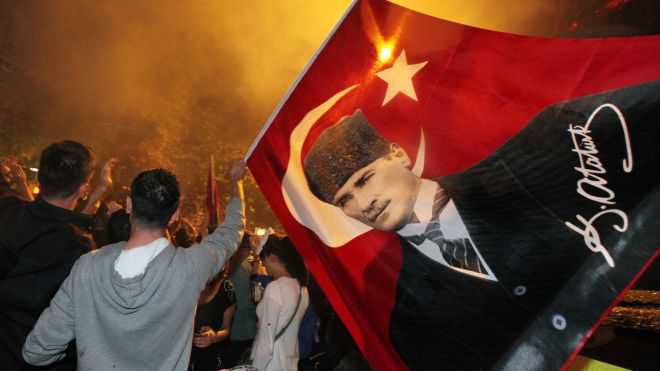JOOST LAGENDIJK
The world is watching Turkey
The conference season has started again. Last week there was the eighth Bosporus Conference, organized by the British Council, the Turkish Economic and Social Studies Foundation (TESEV), a Turkish think tank, and the delegation of the European Union in Turkey.
The focus, as in previous years, was on the relations between Turkey and the EU. A couple of days ago, the German Marshall Fund of the United States (GMF), in partnership with the Dutch Ministry of Foreign Affairs and the Economic Policy Foundation of Turkey (TEPAV), invited a selected group of Turkish and foreign specialists to discuss the impact of the Arab Spring on Turkey, the EU and the US. Next week we will see the second Istanbul Forum, hosted by Suat Kınıklıoğlu’s Center for Strategic Communication, in partnership with the GMF, where several panels will be dedicated to the changes in Turkey’s neighborhood and what that means for Ankara’s policy. Finally, on November 17-18, the Turkish Confederation of Businessmen and Industrialists (TUSKON) will gather another mixed group of Turkish and foreign pundits to see how the common interests in bringing Turkey closer to the EU can be rediscovered. I am sure that there are many other meetings that I am not aware of.
It is clear that from a European and American perspective, Turkey, more than ever, is a key player in the region and that analysts all over the world are interested in how to interpret Turkey’s policy, now and in the future.
On the one hand, many wonder how Turkey and the EU will manage to overcome the present stalemate in the official accession negotiations. For understandable reasons, some participants in the conferences I attended are very skeptical about Turkey-EU relations and do not believe there is a way out. Most others admit that there are the difficulties but, at the same time, recognize that there is no interest on the part of the EU nor Turkey to break up. Everybody is curious whether or not recent efforts by the EU to find common ground with Turkey on the Balkans and in North Africa and the Middle East will lead to a renewed sense of common destiny. Overall, the conclusion is that, in order to safeguard their long term economic and strategic interests, Turkey and the EU should try to hang on in the next two years. After the presidential elections in France next year and the parliamentary elections in Germany in 2013, it will be clear whether major internal obstacles inside the EU will be removed. By that time, the EU should also have been able to solve the euro crisis which would allow the union to look beyond its present borders once more.
Much more exciting than the complexities of Turkey’s relations with the EU, are of course the popular uprisings in North Africa and the role Turkey is playing there. The so-called Turkish Model always pops up in those debates. It was interesting to see at the recent GMF event how analysts from different countries came to totally opposing conclusions. While one Arab specialist underlined the importance of Turkey as a source of inspiration for many activists and democrats in the Arab world, another commentator from the region strongly objected to this positive perception. According to him, the Turkish Model is an urban myth, repeated over and over again by a small group of Arabs who want to please their Turkish and European counterparts and prove to them that there is no need to be afraid of radical changes in Egypt or Libya. In the real world, for instance on most Arab websites and blogs, he claimed, Turkey does not figure as a shining example.
Most Western participants seemed to be disappointed after hearing this sobering message. Turkish officials pretended not to be and stressed that Turkey has never had any intention to export its successful mix of a liberal economy, a secular state and a democratic society in the making, to a neighborhood that went through a totally different historical experience during the last 100 years.
I am not so sure whether the mentioned Turkish hands-off policy is completely true. It seems obvious that Turkey has an interest in stable and democratic neighbors that goes beyond finding new markets for Turkish products. The good thing is that we still have quite a lot of time to find out who is right here. We are only at the start of a process in the Arab world that might well take 25 years to crystallize. In other words: many more conferences to go.
via The world is watching Turkey.


